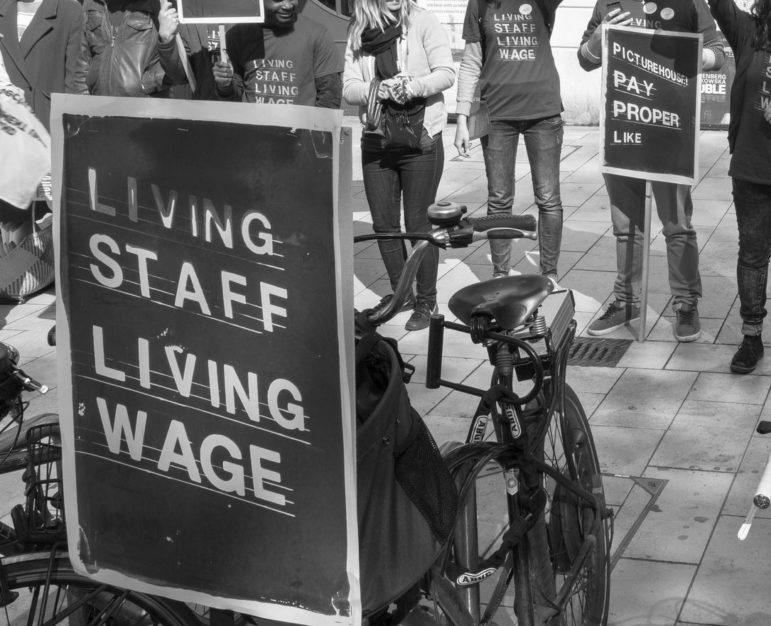
Last month marked an important moment for the nonprofit human services workforce. Members of the District Council 1707 (DC 1707) labor union and a membership organization of childcare providers, Day Care Council of New York (DCCNY), negotiated a four-year contract for 2,700 daycare workers in New York City serving 10,500 children. This negotiation process was unique because the New York City Office of Management and Budget (OMB) and Office of Labor Relations (OLR) were largely driving the process. OMB and OLR intervened because the City is ultimately in control of contract funding levels, which determine benefits and salaries.
While this contract will apply only to those daycare workers represented by the DC 1707 union in New York City, it raises important questions about the human services workforce as a whole—a workforce that provides critical services on behalf of government and that is comprised predominantly of people of color and women. Who should determine the wages of the human services workforce? How should compensation be set? The answers to these questions have significant implications for economic development and equity.
Government relies on nonprofit human services organizations to deliver high-quality programs that help individuals cope with and overcome diverse challenges, and create opportunities for people of all backgrounds to live safe, healthy, productive lives. Currently, the City has approximately 4,000 contracts with roughly 1,200 nonprofit organizations, and there are more than 100,000 human services workers in the City. Many of these organizations receive 80 to 90 percent of their funding from the government, and unlike other industries, nonprofits cannot increase prices or pull from a profit margin to fund wage and benefit increases. When the government constricts nonprofit funding, it constricts nonprofit worker compensation, as nonprofits simply cannot afford to pay a living wage or provide decent health insurance coverage or retirement plans for their employees. For service providers, attracting and retaining committed and specialized workers is crucial, as they are the foundation of programmatic success.
Despite the clear importance of the services they provide, the members of this workforce increasingly find themselves in the very same position as their clients—in need of social service assistance to provide for their families. Furthermore, given the demographic makeup (84 percent female and 75 percent people of color of this workforce), it is a key proxy for equitable development. When we underinvest in human services workers, we perpetuate the cycle of poverty for thousands of people of color and women.
Sign up for our free newsletters
Subscribe to NPQ's newsletters to have our top stories delivered directly to your inbox.
By signing up, you agree to our privacy policy and terms of use, and to receive messages from NPQ and our partners.
Unfortunately, decades of chronic underfunding among this workforce and the organizations themselves have resulted in a fiscal crisis for New York’s nonprofit sector. In 2013, nearly one in five human-services providers were insolvent. This dire situation has forced the city to take action, and the government has taken a number of steps to improve compensation levels for workers in this field. Last year, New York City’s Mayor de Blasio set a $15 wage floor on human services contracts and funded that increase. Additionally, he provided a 2.5 percent increase to all workers covered by City contracts. But more must be done, as human services workers had not seen a cost-of-living increase in the six years prior to these crucial investments.
These commitments to the human services workforce are monumental, but only the first step in addressing chronic low wages that go back 20 or more years. New York’s real advancement has been in the recent formation of the Nonprofit Resiliency Committee, which brings together members from nonprofits, philanthropy, academia and city agencies to work collaboratively on policy solutions that will drive a stronger, more resilient nonprofit human services sector and workforce.
As we outlined in our report, New York Nonprofits in the Aftermath of FEGS: A Call to Action, this type of collaboration is crucial, and we are hopeful that this will be an avenue for finally addressing the longstanding injustice inherent in the undercompensation of our workforce. The nonprofit sector cannot continue to operate at a fiscal and political deficit, and more importantly, our workforce cannot continue to provide critical services on behalf of government with stagnant and low wages.
The DC 1707 agreement reminds us that government drives compensation levels at nonprofit human service agencies. When government funds nonprofit contracts adequately, they promote equity by boosting compensation and benefits for this predominately female and highly diverse workforce. Governments across the country should pay attention to the developments taking place in New York City and consider taking similar actions to improve compensation levels for this valuable and under-resourced workforce.













